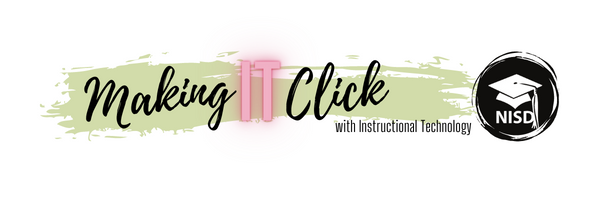Tired of the same old pen-and-paper, drill-and-kill nature of test corrections, Algebra 2 teacher Mrs. Kubacki at Northwest High School wanted to shake things up and to make math a little more engaging for her high schoolers. Of course, her existing method was working just fine; students were completing the corrections and often showing growth. Still, she wanted to take a risk.
Quiz corrections are a staple task in her classroom because they give her students the opportunity to earn back missed points on tests. Many of her students rely on them as a way to boost their grade, and she relied on them as an important step in assessing her students progress in advance of a test. She wanted to ensure that when she replaced a tried-and-true method she would still end up with meaningful evidence of learning, so she turned to an tool that is rising in popularity: a video discussion platform.
Tools like FlipGrid and Recap are becoming more renown, but with any new tool, it’s how you use it that truly matters. Though a great tool for virtual classroom discussion or Vlogging, Kubacki instead challenged her students to create with it. She wanted to see student-created tutorials, to be shared with the class.
Using Recap, also known as Let’s Recap and Recap That, her students created video tutorials for one another solving the questions they had originally missed on their quiz. Prior to filming, she gave them clear-cut, high expectations: they had to show their work, use and even define academic vocabulary words for their audience, and show their work step-by-step so their peers could better learn from their video. As a class and before they first participated, they created a list of video norms and best practices for their tutorials. (This list included rules like: No filming and walking. Eliminate as much background noise as possible. Rehearse your video before filming...)
Using Recap, also known as Let’s Recap and Recap That, her students created video tutorials for one another solving the questions they had originally missed on their quiz. Prior to filming, she gave them clear-cut, high expectations: they had to show their work, use and even define academic vocabulary words for their audience, and show their work step-by-step so their peers could better learn from their video. As a class and before they first participated, they created a list of video norms and best practices for their tutorials. (This list included rules like: No filming and walking. Eliminate as much background noise as possible. Rehearse your video before filming...)
 It's probably worth mentioning that many students did have reservations at first; a selfie generation who constantly Facetime, SnapChat, and learn from YouTube are afraid to be on camera. Just like many adults, they were nervous to document their learning and share it with an audience. Anticipating this, Kubacki did not force her students to be on camera, but instead gave them a choice. She also artfully paired students up for the task, sure to consider their personalities. And since she knows it’s helpful when a leader takes the first risk, she was sure to create her own video first, modeling the class-created expectations.
It's probably worth mentioning that many students did have reservations at first; a selfie generation who constantly Facetime, SnapChat, and learn from YouTube are afraid to be on camera. Just like many adults, they were nervous to document their learning and share it with an audience. Anticipating this, Kubacki did not force her students to be on camera, but instead gave them a choice. She also artfully paired students up for the task, sure to consider their personalities. And since she knows it’s helpful when a leader takes the first risk, she was sure to create her own video first, modeling the class-created expectations.
On the day students finally created and published their video tutorials in class, their teacher was both mobile and available to help anyone in need -- this is one of the many benefits in giving students tasks of creation; the teacher can move out of the driver’s seat and into the passenger’s seat. In the event a student did get stuck, they were expected to create a "point of confusion video" --to post their problem step-by-step, up to the point of confusion, and to finally ask their peers for help. Because she expected students to comment on each other’s videos (they established norms for this too), students were able to get help on their corrections and were able to get immediate feedback from both their peers and their teacher.
Of course, Mrs. Kubacki could have stayed with her tried-and-true method of pen and paper, but what would her students have missed out on? Would they have felt as challenged? What academic or even personal growth might they have missed out on? By instead asking them to create video tutorials through Recap, she gave students a platform where they could immediately share their personal growth with a community of learners who could also benefit from their hard work. Taking this risk gave a larger purpose to students' time and to an otherwise mundane task such as quiz corrections. Even more, these students were empowered to own and share their learning by creating something that would help others.
*This blog has been corrected to clarify that the assignment, quiz corrections, was designed as a formative assessment tool leading up to a final summative grade.
*This blog has been corrected to clarify that the assignment, quiz corrections, was designed as a formative assessment tool leading up to a final summative grade.


No comments:
Post a Comment
Note: Only a member of this blog may post a comment.